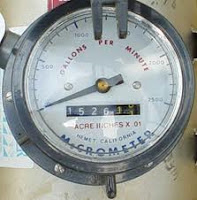Season’s Greetings
+
The Very Best of Wishes
For Extreme Delight and Joy
To Become Routine
For You and Yours
In Twenty-Thirteen!
To solve our Water Crisis, we need innovations that increase FRESHWATER supply while increasing sustainability and resilience of Nature's ecosystems --- We cannot just rely on using less water --- AIR can be a new source of free fresh drinking water everywhere on Earth. As we are not likely to ever have unlimited cheap power, this blog focuses on water-in-air and on insights gained from the world of humans, plants, animals & insects to engineer a BIOLOGICAL way to EXTRACT WATER FROM AIR
 |
| 26 Largest river basins on Earth Cartographer - Delphine Digout, UNEP/GRID-Arendal |
 |
| Rainfed Agricuture Source - fao.org |
 |
| Source - ec.gc.ca |
 |
| Source - vitanetonline.com |
 |
| Source - bueatyinthebag.com |
 |
| Source - Financial Times Newspaper dated 16 Nov 2012 |
| Source - wikipedia.org |
 |
| Dirty and Clean Water Source - trashwater.org |
 |
| Source - westbasin.org |
 |
| Each component stands apart Source - tojojoling.blogspot.com |
 |
| Each piece stands apart Source - cookteen.com |
Gas
|
Ratio compared to Dry Air (%)
|
Chemical Symbol
|
|
By volume
|
By weight
|
||
Oxygen
|
20.95
|
23.20
|
O2
|
Nitrogen
|
78.09
|
75.47
|
N2
|
Hydrogen
|
0.00005
|
~ 0
|
H2
|
Argon
|
0.933
|
1.28
|
Ar
|
Neon
|
0.0018
|
0.0012
|
Ne
|
Helium
|
0.0005
|
0.00007
|
He
|
Krypton
|
0.0001
|
0.0003
|
Kr
|
Xenon
|
9 10-6
|
0.00004
|
Xe
|
 |
| The US Fiscal Cliff Source - healthreformexplained.com |
| The Freshwater "Gap" Source - World Economic Forum |
 |
| Super storm Sandy turns lights off Source - news.yahoo.com |
 |
| Asuper wealthy country inext to a not-so welthy nation Source - churchworldservice.org |
 |
| Seawater composition Source - earth.usc.edu |
 |
| Source - 123rf.com |
 |
| Source - forbes.com |
 |
| Source - invigorate.royalsociety.org |
 |
| Source - exploresound.org |
 |
| hydraulis circa 1,000 BC Source - en.wikipedia.org |
 |
| Water Organ Source - en.wikipedia.org |
 |
| A Hydraulophone Source - en.wikipedia.org |
 |
| A Coconut Shell with a hole Source - sciencephoto.com |
 |
| A Klepsydra Source - depthome.brooklyn.cuny.edu |
 |
| Image from Full Body Scanners Source - en.wikipedia.org |
 |
| Full Body Scanner Equipment Source - au.ibtimes.com |
 |
| Terahertz radiation band Source - teranova-ist.org |
 |
| Terahertz Radiation absorbed by water vapor Source - en.wikipedia.org |
 |
| A Custom Clothing Machine Source - digitalstyledigest.com |
 |
| Source - cartoonstock.com |
 |
| Bathroom plumbing Source - avivimprovements.wordpress.com |
 |
| Esher's Waterfall Source - en.wikipedia.org |
 |
| Women fetching water Source - artwolfe.photoshelter.com |
 |
| Water Meter Source - caes.uga.edu |
 |
| Source - willoughby.nsw.gov.au |
 |
| Source - diswaterdrams.com |
 |
| Source - Adapted from Page 15, of book titled "Pandora's Seed" authored by Spencer Wells |
 |
| Source - Ommato LLC |
 |
| Source - blog.cytalk.com |
 |
| Source - twobitbard.weebly.com |
 |
| Source - clker.com |
 |
| Source - go.water.usgs.gov |